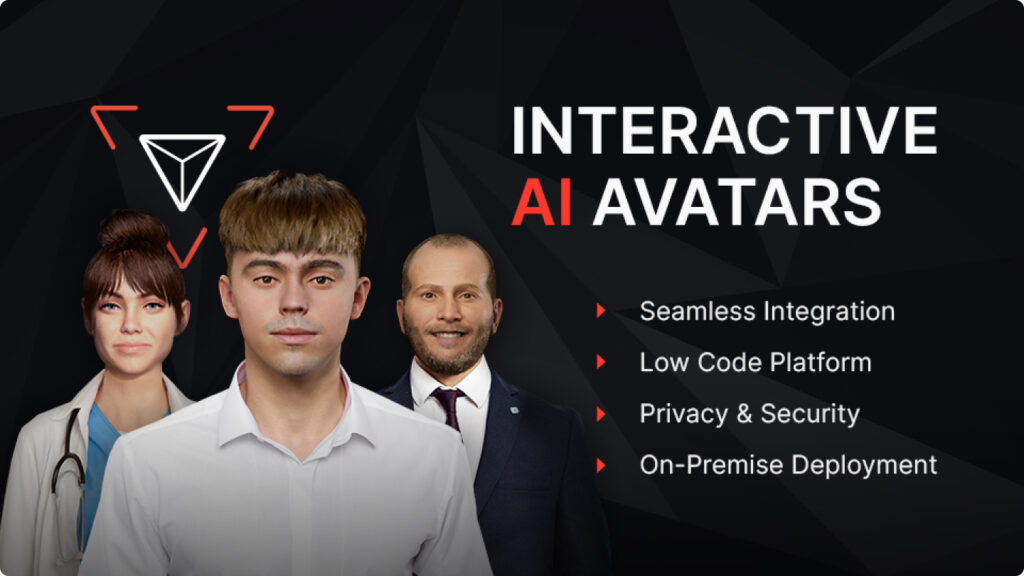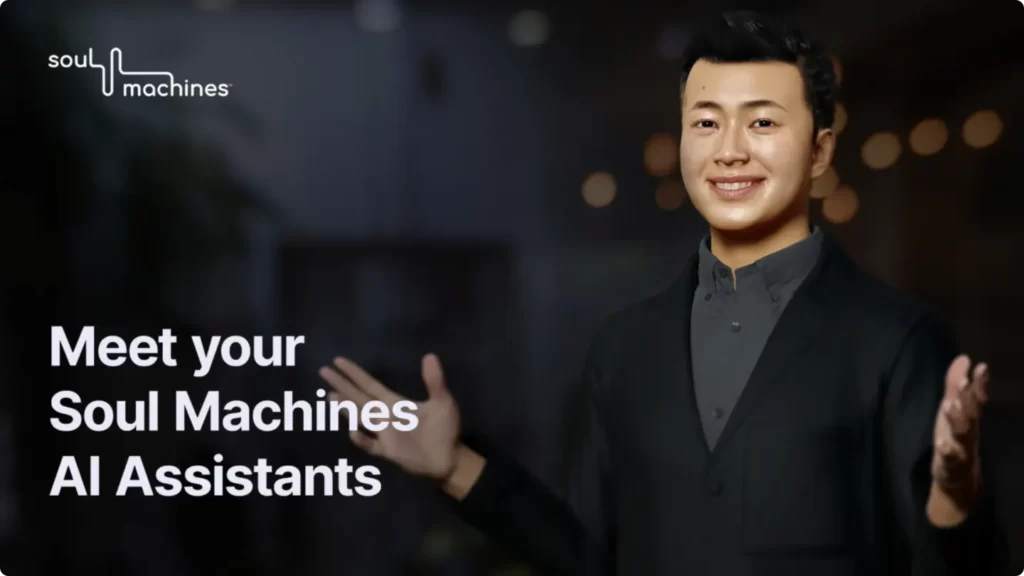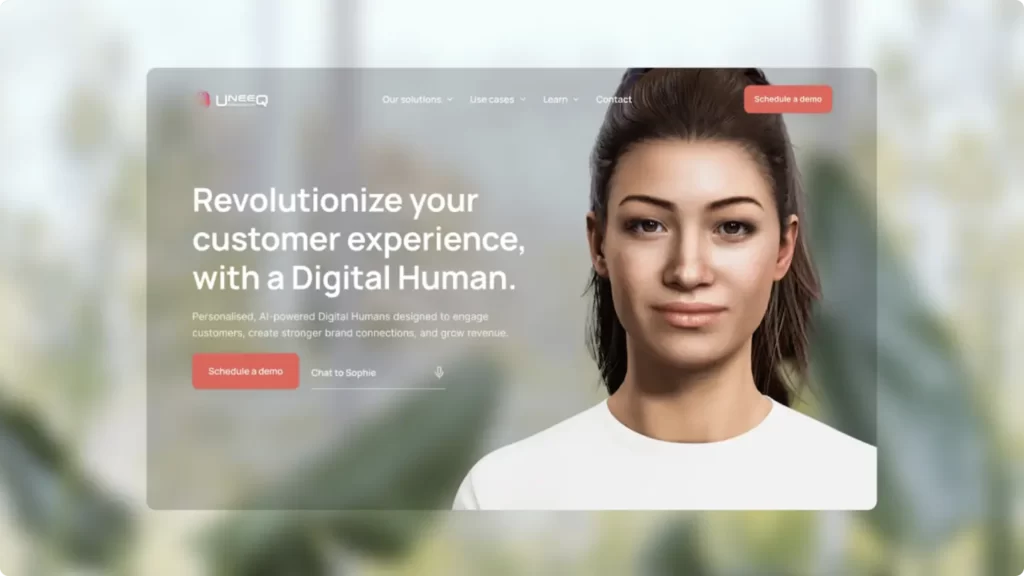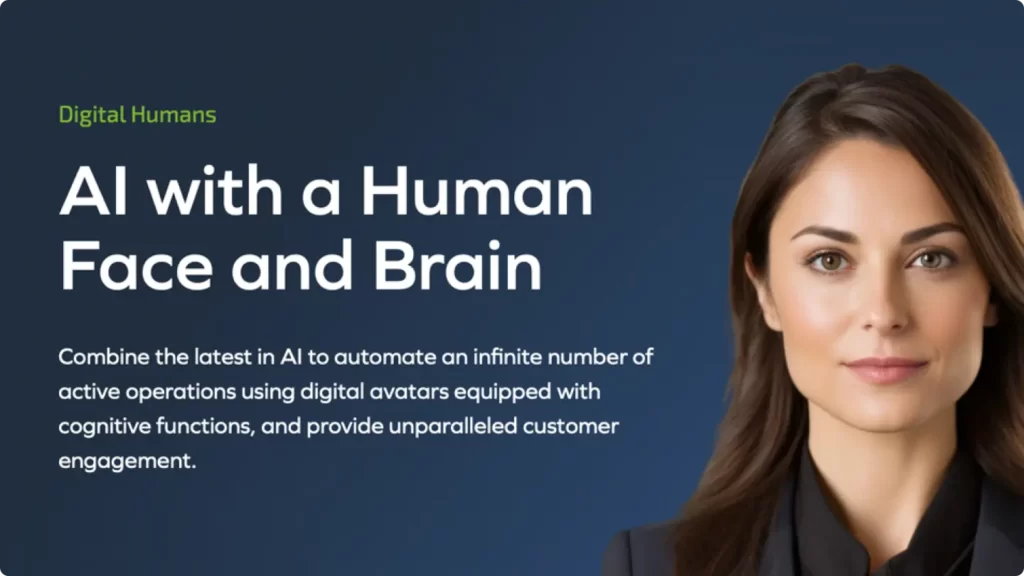AI Humans
In the dawn of a digital age, where intelligence is no longer confined to the organic, AI-generated humans emerge as a powerful new frontier. As we navigate this new reality, we’re not just observers but active participants in reshaping how life and technology converge. So, let’s take a closer look at the dynamic interplay between AI and humanity, and the new possibilities it’s unlocking.
What is the AI-Generated Human Concept?
We are steadily approaching a realm where machines don’t just complete tasks but think, feel, and adapt like humans. The notion of AI humans isn’t just about technological advancement — it challenges our understanding of what it means to be human. Designed to mimic human behavior, emotions, and decision-making, these digital entities blur the divide between artificial and organic life, leaving us in awe of the progress we’ve made.
As AI evolves, we’re forced to ask profound questions. Can machines truly experience the world as we do, or are they bound by their code, forever just a reflection of their creators? Could they ever form genuine relationships with people or among themselves? And if AI becomes sophisticated enough, will it be capable of having thoughts and emotions of its own, just like us?
While AI is still far from being human, we’re nearing a point where the line between creator and creation becomes harder to define. AI humans are no longer a distant dream – they are rapidly becoming part of our reality, transforming how we interact with the world and each other.
Humanizing of AI: How Close We Are?
With each step forward in AI human evolution, we gain clearer insights into both the immense possibilities and the inherent constraints of these technologies. This progress continues to challenge the boundaries of human imagination, reshaping how we perceive intelligence, creativity, and connection in a world increasingly shared with artificial beings.

Human-Like Abilities of AI Humans
AI has made remarkable progress in replicating human abilities. From understanding natural language to expressing emotions, AI humans are becoming increasingly capable of interacting in ways that closely resemble real human behaviors. These advancements are redefining the limits of what we thought achievable, bringing AI closer to replacing humans by becoming more lifelike and attuned to human needs.
NLP and Communication
AI’s ability to understand and generate human language has advanced significantly. NLP models like GPT-4o, LaMDA, LlaMA, and beyond can engage in sophisticated, coherent conversations, mimicking human dialogue, context comprehension, and even humor.
Emotional Intelligence
AI-generated humans are now capable of recognizing and responding to emotional cues. Through sentiment analysis and facial recognition software, they can adjust their responses based on emotional input, making interactions feel more empathetic and human-like.
Deep Learning in Decision-Making
AI systems can now process vast amounts of data to make decisions that often mirror human logic. Through deep learning, AI-generated humans can weigh options, analyze risks, and suggest solutions, displaying decision-making processes that resemble human reasoning.
Machine Learning and Adaptation
AI can absorb insights from experience, refining its responses and behaviors based on past interactions. This ability to evolve over time allows AI humans to personalize interactions in ways that mirror human adaptation and growth.
Hyper-Realistic Appearances
AI humans are designed with hyper-realistic features, from detailed skin textures to lifelike facial expressions and eye movements. These advancements make them look strikingly true-to-life, enhancing the naturalness of interactions and making them more immersive.
Personalized Interactions
AI humans are adept at learning individual preferences and habits, tailoring responses and recommendations to users’ needs, much like how real humans customize their behavior based on personal relationships.
Challenges of AI Humanization
Despite rapid progress, there are still clear limitations that remind us how far AI has to go before becoming truly indistinguishable from us as people. While AI can replicate certain behaviors, it often misses the depth and complexity that define human self-awareness and emotional experiences, keeping the line between humans and machines firmly in place.
Lack of True Consciousness
Even with AI’s impressive ability to mimic human behavior, genuine consciousness remains out of reach. AI humans do not possess cognitive insight, internal thoughts, or subjective experiences, which fundamentally separates them from real humans.
Limits in Emotional Empathy
While AI human generators can craft a digital entity that recognizes and responds to emotions, it cannot meaningfully feel them. Its responses, though convincing, rely on learned patterns and lack the depth and spontaneity of authentic human empathy and emotional intelligence.
Barriers to Contextual
Insight
AI still struggles with grasping deeper context and nuance. While AI-generated humans can navigate straightforward conversations, they often fail to catch subtleties like sarcasm, cultural references, or social cues — elements that come instinctively to real humans.
Struggles with Genuine Connection
Human relationships thrive on spontaneous, unpredictable emotions and authentic connections. While AI can simulate conversations, it falls short of capturing the natural fluidity and emotional warmth that define real human interaction.
Gaps in Moral Judgment
AI cannot fully comprehend moral and ethical complexities. While it can follow programmed guidelines, it is unable to reason intuitively or make values-based decisions when faced with ethical dilemmas.
Narrowed Creativity
While AI’s creative outputs are impressive, they still rely on methodologies and data from humans. AI cannot replace human creativity when it comes to designing truly original works, as it lacks imagination and emotional inspiration.
AI vs Human: Roles Already Shifting
As AI humans advance, they’re becoming more integrated into both industries and daily tasks, adding a human-like element to digital interactions. These AI-powered beings are making their growing presence felt by stepping into key roles once dominated by humans, reshaping how we engage with technology:
Customer Support Agents
Handle inquiries, provide real-time assistance, and resolve complex issues with human-like responsiveness.
Sales Representatives
Offer personalized product recommendations and guide customers through tailored purchasing decisions.
Public Speakers
Lead virtual events, deliver impactful presentations, and engage audiences with dynamic keynotes.
Entertainment Performers
Star in virtual productions, interactive media, and take on the roles of digital influencers.
Personal Companions
Provide emotional support through meaningful, engaging conversations and foster human-like connections.
Healthcare Assistants
Assist with patient management, offer virtual consultations, and support healthcare professionals.
Tutors and Trainers
Deliver personalized educational content, guide training programs, and respond to learner questions in real-time.
In this journey, as we shape AI, AI shapes us. The story isn’t just about machines replacing humans, but about redefining our relationship with technology and co-creating a new reality.
So, are you ready to embrace the transformation?
Top AI Human Generators
With AI progress speeding up, a growing number of tools and services are emerging that specialize in crafting AI humans, pushing the boundaries of what artificial beings can achieve within the current technological framework. These platforms offer a glimpse into the future, where AI can not only interact with us but also emulate human behavior in increasingly convincing ways.
RAVATAR
RAVATAR stands out as the leader in the field of AI human generation, offering highly advanced AI avatars that are the closest representation of the AI human concept.
Through sophisticated machine learning and deep learning algorithms, lifelike visual design, and advanced natural language processing (NLP) and natural language generation (NLG) capabilities, RAVATAR’s AI avatars interact naturally, making them feel almost indistinguishable from real humans in many contexts.

RAVATAR’s AI avatars are already making a powerful impact across multiple sectors, transforming healthcare, customer service, brand representation, public performances, and education, among others. Fully compatible with modern holographic displays, these digital humans take realism to the next level, offering interactions that feel almost tangible—bringing a unique, immersive quality that sets them apart from typical virtual experiences. This cutting-edge integration, powered by RAVATAR’s advanced AI human 3D model generator, bridges the gap between AI and human connection, making engagements more meaningful and relatable.
The versatility of RAVATAR’s AI avatars shows just how close we are to realizing the vision of ultimate AI humans—dynamic, adaptable, and deeply woven into various aspects of everyday life.
Soul Machines
Soul Machines specializes in creating digital people powered by AI, combining emotional intelligence with visually realistic avatars. These digital beings focus primarily on customer engagement and service interactions, simulating human-like expressions and responses.

Powered by the company’s Human OS platform, they engage in real-time conversations, provide personalized assistance, and adapt to users’ needs. Soul Machines also allows businesses to create and customize their own AI assistants through its Soul Machines Studio, enhancing customer interaction with a human touch.
UneeQ Digital Humans
DigitalHumans powered by UneeQ, provides digital human solutions designed for businesses aiming to create engaging, personalized interactions at scale. Their AI-driven avatars are lifelike and capable of real-time conversations, supporting industries such as healthcare, retail, customer service, and education.

Using UneeQ’s AI human generator, DigitalHumans offers customizable avatars designed to improve user engagement, brand loyalty, and customer satisfaction through emotionally intelligent interactions. They also offer customizable digital human creation for enterprise needs, combining realistic animation, natural voice, and adaptive responses to deliver an enhanced customer experience.
Born Digital
Born Digital offers AI-driven digital humans designed to enhance customer engagement and automate various processes. Their digital humans are fully customizable, aligning with brand identity through personalized appearances, voices, and interactions.

Used across industries such as healthcare, public services, and sales, these avatars perform human-like tasks, including providing customer support, authenticating clients, and processing documents. Their integration with Generative AI and Conversational AI ensures seamless, emotionally intelligent interactions, driving business results by improving customer experience and operational efficiency.
A World Shared by AI and Humans: What’s Next?
What was once considered uniquely human is now shared with AI, blending efficiency with empathy in new and exciting ways. As this integration deepens, it leaves us to wonder: how far will this transformation go, and what space will remain for humans in this rapidly evolving landscape?
The answer is yet to be written.
